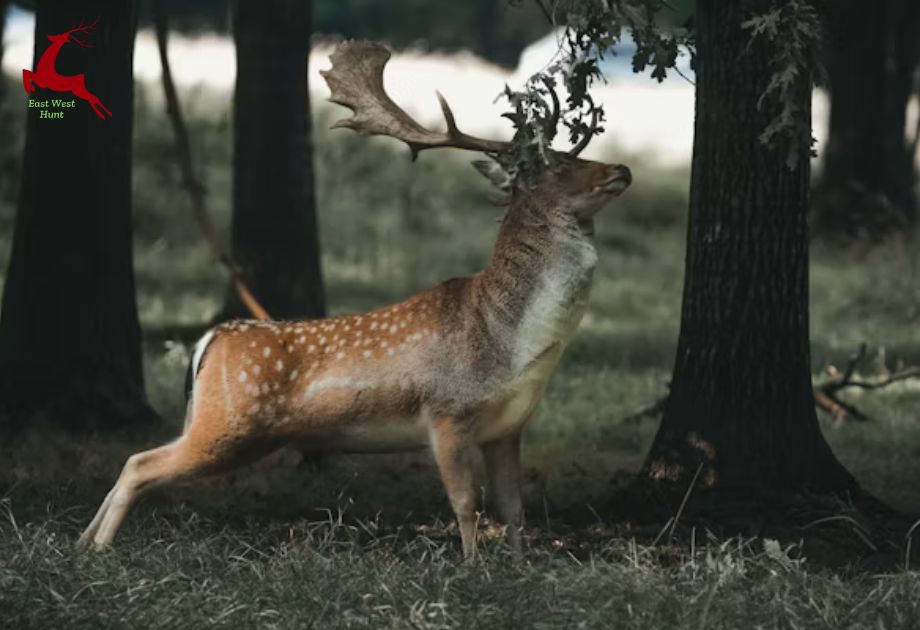Hunting whitetails in the bottoms of hill country presents unique challenges and opportunities. Deer use these areas for bedding, feeding, and travel, but factors like wind, thermals, and pressure must be carefully considered. Here are some essential tips.
Play the Wind and Thermals
Why It’s Important:
In hill country, the wind and thermals are more complex than in flat terrain. In the mornings, thermals rise as the air warms, and in the evenings, thermals drop as the air cools. If you’re not paying attention to this, your scent will alert deer before you even see them.
How to Apply It:
- Morning Hunts: Set up slightly above the bottom where rising thermals will carry your scent upward, away from the deer.
- Evening Hunts: Stay on the lower edges, as the falling thermals will carry scent downward.
- Wind Direction: Hunt with a crosswind whenever possible, as shifting winds in the bottom can swirl and betray your location.
Find Natural Funnels and Travel Corridors
Why It’s Important:
Deer naturally travel through certain terrain features, especially in hill country. They will take the path of least resistance, using ridgelines, benches, saddles, and creek crossings.
How to Apply It:
- Look for pinch points where steep hills force deer through a narrow area.
- Hunt benches, which are flatter spots on the side of hills where deer feel comfortable moving.
- Focus on creek crossings, where deer travel to and from bedding areas.
- Identify saddles, which are lower spots between ridges where deer often move between feeding and bedding areas.
Hunt the Edges of Bedding Areas
Why It’s Important:
Bucks, especially mature ones, prefer to bed where they have a clear view of the bottom while also having the wind at their back for safety.
How to Apply It:
- Find thick cover on side hills or at the base of ridges—this is often where deer bed.
- Set up just outside of these areas, where bucks stage before moving to food sources.
- Be careful not to get too close and bump deer out of their beds.
Utilize Creek Beds for Stealthy Access
Why It’s Important:
Creeks can serve as a natural way to sneak into position without making noise or leaving too much scent.
How to Apply It:
- Walk directly in the water when possible to minimize scent on the ground.
- Use bends in the creek to peek into travel areas without exposing yourself.
- Avoid walking on dry leaves and crunchy terrain near the bottom where deer can hear you.
Hunt During the Rut for Increased Daylight Movement
Why It’s Important:
Mature bucks are usually nocturnal, but during the rut, they move more freely in daylight, often using the bottoms to scent-check for does.
How to Apply It:
- Focus on travel routes connecting doe bedding areas.
- Hunt all day if possible—bucks may cruise through bottoms at any time.
- Use calling techniques like grunting and rattling to pull bucks into range.
Time Your Hunts After Rain or a Cold Front
Why It’s Important:
Deer feel safer moving in the open after a storm or significant temperature drop.
How to Apply It:
- Hunt immediately after a rain, as deer will start moving to fresh food sources.
- Target the first cold morning after a warm spell—bucks will be on their feet.
- Use soft, wet ground to your advantage, as it helps mask your approach noise.
Avoid Over-Pressuring the Area
Why It’s Important:
Deer will quickly learn to avoid areas where they feel human presence. If you hunt the same bottom too often, bucks will shift their movement patterns.
How to Apply It:
- Rotate stands and avoid hunting the same spot too frequently.
- Only hunt the bottom when conditions are ideal.
- Use trail cameras to gather intel instead of scouting too often.
Use a Climber or Saddle for Mobility
Why It’s Important:
Wind and deer movement patterns change, so being able to adjust your setup is crucial.
How to Apply It:
- Use a climbing tree stand or a tree saddle for quick, quiet setups.
- Set up just off the trails rather than directly on them.
- Hunt higher up on the slopes if the wind is unpredictable in the bottom.
Target Mast Trees and Natural Food Sources
Why It’s Important:
Deer in hill country rely on acorns, soft mast (apples, persimmons), and green browse rather than agricultural fields.
How to Apply It:
- Identify white oak trees—deer prefer these acorns over others.
- Hunt near edges of food sources, such as clearings within the bottom.
- Pay attention to fresh droppings and tracks indicating recent feeding activity.
Conclusion
Hunting whitetails in the bottoms of hill country is all about understanding terrain, wind, and deer movement patterns. Use natural travel corridors, stay stealthy, and hunt smart based on weather conditions. By applying these tips, you’ll increase your chances of encountering a mature buck in this challenging but rewarding terrain.

